This article was co-authored by wikiHow Staff. Our trained team of editors and researchers validate articles for accuracy and comprehensiveness. wikiHow's Content Management Team carefully monitors the work from our editorial staff to ensure that each article is backed by trusted research and meets our high quality standards.
There are 9 references cited in this article, which can be found at the bottom of the page.
wikiHow marks an article as reader-approved once it receives enough positive feedback. This article received 20 testimonials and 87% of readers who voted found it helpful, earning it our reader-approved status.
This article has been viewed 497,884 times.
Learn more...
It’s no surprise that you can learn a lot about someone based on what they write. However, did you know that you can learn just as much about them based on how they write? In fact, a person’s handwriting can actually provide an in-depth look into their personality. Graphology, the study of handwriting, is a useful tool in determining what someone is like.[1] Graphologists believe that handwriting can be a window into the mind of the writer, and by analyzing how someone transcribes letters and words onto a page, you can analyze their psychological profile. [2]
Steps
Observing the Sizing & Spacing
-
1Look at the size of the letters. This is the first, and most basic, observation you can make about someone’s handwriting. To determine what size the handwriting would be classified, visualize the paper you might have learned to write on as children. It is lined paper, with faint mid-lines down the center of each line. Small letters would fall below the midline, average letters hit the midline, and large letters take up the entire line. [3]
- Large letters are a sign that someone is pretty outgoing, sociable, and may like being the center of attention. However, it can also indicate false confidence and a desire to be something they're not.
- Small letters can mean someone is more shy and timid. Small letters can also indicate meticulousness and intense focus.
- Average size letters mean the person is well-adjusted and adaptable. They occupy a nice middle ground between two extremes.
-
2Examine the gaps between words and letters. Words that are scrunched together tightly indicate that the person dislikes being alone. They probably choose to be around people as much as possible, and may have issues respecting “the bubble” of personal space. If they use wide spaces between words and letters, they enjoy independence and open spaces. They don’t like to be overwhelmed, and they value their freedom.[4]Advertisement
-
3Check out the margins of the page. Did they write all over, or did they leave spaces around the edges? If they left a larger margin on the left side of the page, they may be someone who dwells in the past a bit. On the other hand, those who leave spaces on the right hand margin may worry too much about the future, and get anxiety thinking about what’s ahead. A person who writes all over the page is probably a bit spastic, with a racing mind.[5]
Analyzing the Style
-
1Study printed letters. There are several letters in the alphabet that can be written different ways, and everyone develops their own style and preference. Someone's method of writing certain letters can be great clues into their personality.[6] [7]
- A narrow loop in the lowercase “e” can indicate skepticism or suspicion towards others. This person may be guarded and stoic. A wide loop can show that the person is more open to new people and experiences.
- A person who dots their lowercase “i” very high may be more creative and free-spirited than a person who dots the “i” right on top. Those people tend to be more structured and detail-oriented. If the dot on the “i” is an open circle, the person may be more spirited and childlike.
- When it comes to the capital I, look how the writer uses it. When they are referring to themselves by saying “I,” is the letter bigger than the rest of the words? Someone who uses a large “I” may be cocky and a little overly confident. If the capital “I” is the same size or smaller than the rest of the words, they are content with who they are.
- Crossing a “t” with a long line indicates enthusiasm and determination. A short cross can be a sign of apathy and a lack of determination. Crossing a “t” very high up can mimic having high goals and high esteem, while crossing the “t” low can indicate the opposite.
- If their “o” is left open, the writer may be more of an open book. They tend to be expressive and willing to share secrets. A closed “o” can mean that someone treasures privacy and may tend toward introversion.
-
2Observe cursive letters. Of course, not every writing sample you obtain will contain both printed and cursive letters, but you will get the most information if you can examine both. Cursive writing provides new clues that you cannot get from printed writing.[8] [9]
- Look at the lowercase “l.” A narrow loop in the “l” can be a sign of tension, caused by limiting or restricting yourself, while a wide loop may mean you’re more unstructured, easy going, and relaxed.
- Check out the lowercase “s.” A rounded “s” may mean the writer likes to keep the people around them happy, preferring to stay out of confrontations. A pointier “s” is a sign that someone is curious, hardworking, and ambitious. Finally, if the “s” widens out at the bottom, the writer may not be pursuing the job or relationships that they genuinely desire.
- The length and width of the lowercase “y” can tell you something. A skinny “y” can indicate that the writer is picky when choosing friends, while a broad “y” probably means they approach friendship with a “more the merrier” approach. A long “y” suggests a person loves to explore and travel, while a short “y” may suggest the person would prefer to stay at home.
-
3Scrutinize the shape of letters. A writer that uses loopy, rounded letters tends to be more imaginative, creative, and artistic. Pointed letters can indicate intensity, aggression, and intelligence. If the letters all connect together, the writer may be more orderly and methodical.[10]
-
4Inspect the signature. An illegible signature can be a sign that the writer is reserved and private. A legible signature indicates that they are more self-assured and content with themselves.
- A quickly scrawled signature may also mean that the signer is impatient and appreciates efficiency. A careful signature can show that the signer is precise and independent.
Noting Slanting, Pressure, and Deviations
-
1Look at the slanting on the words and letters. The words may slant to the right or the left, or they may be perfectly upright. If they slant to the right, the writer is probably more on the easygoing side, always looking to try new things and meet new people. Writers whose words slant to the left may keep to themselves a bit more, enjoying their solitude and anonymity. If a person’s writing is straight up-and-down, they are probably rational and level-headed.[11]
- There is one catch to this. If the writer is left-handed, the analysis of the right and left slanting should be switched. In other words, if a left-handed person slants their words to the right, they may be more shy, while if they slant their words to the left, they may be more outgoing and sociable.
-
2Determine how much pressure they used to write. You can figure this out by the darkness and intensity of the ink on the page, or perhaps by flipping the paper over and seeing if there are indentations from the pen. People who write with heavy pressure usually take things pretty seriously, but they may also be rigid and volatile.[12] People who write very lightly are generally sensitive and compassionate, although they may also lack energy and liveliness.[13]
-
3Look for sections of handwriting that stand out from the rest. This could be a tiny, cramped writing that looks out-of-place in a document filled with large, spacey handwriting. Maybe there is a segment of writing that looks rushed, while the rest looks meticulously written. Pay close attention to this. Writing that looks different from the rest can indicate uncertainty, or even a lie.[14]
Community Q&A
-
QuestionI write in all capital letters with the first letter of each word a slightly larger capital than the rest of the word. What does that mean about my personality?
 Community AnswerYou're bold and know what you want to do. Dilly-Dallies annoy you immensely and you prefer to be outgoing instead of shy and timid.
Community AnswerYou're bold and know what you want to do. Dilly-Dallies annoy you immensely and you prefer to be outgoing instead of shy and timid. -
QuestionMy handwriting changes in almost every page. What does that indicate?
 Community AnswerIt indicates that you are generally a person who goes with the flow and doesn't like to stick to an organized schedule.
Community AnswerIt indicates that you are generally a person who goes with the flow and doesn't like to stick to an organized schedule. -
QuestionWhat does it mean if I write in block capital letters?
 Community AnswerThat means you tend to not allow others to see weakness in you. You only show your strengths.
Community AnswerThat means you tend to not allow others to see weakness in you. You only show your strengths.
Warnings
- While handwriting analysis can be useful and interesting, it shouldn’t be taken as a black and white science. It can only provide general statements about traits or motivations that the writer may have.[15]⧼thumbs_response⧽
References
- ↑ https://www.britishgraphology.org/about-british-institute-of-graphologists/what-is-graphology/
- ↑ http://www.britishgraphology.org/about-british-institute-of-graphologists/what-is-graphology/
- ↑ http://www.pens.com/handwriting-infographic/
- ↑ http://www.pens.com/handwriting-infographic
- ↑ http://www.pens.com/handwriting-infographic
- ↑ http://www.pens.com/handwriting-infographic/
- ↑ https://www.crimemuseum.org/crime-library/forensic-investigation/handwriting-analysis/
- ↑ http://www.pens.com/handwriting-infographic/
- ↑ https://www.robsonforensic.com/articles/forensic-handwriting-analysis-expert
- ↑ http://www.realsimple.com/work-life/life-strategies/handwriting-101/handwriting-intro/
- ↑ http://www.pens.com/handwriting-infographic/
- ↑ https://www.crimemuseum.org/crime-library/forensic-investigation/handwriting-analysis/
- ↑ http://www.pens.com/handwriting-infographic/
- ↑ http://www.pens.com/handwriting-infographic/
- ↑ https://www.cia.gov/library/center-for-the-study-of-intelligence/kent-csi/vol3no3/html/v03i3a04p_0001.htm
About This Article
To tell what someone is like from their handwriting, pay attention to whether they write with big or small letters. If they write with small letters, they may be shy, or meticulous in their work, while large letters indicate someone is outgoing. Additionally, look at the spaces between their words since people who leave small spaces tend to not like to be alone. Alternatively, check if they wrote in the margins, because a large margin on the left suggests someone who dwells in the past, whereas a large margin on the right may indicate someone who fears the future. For tips on how to interpret cursive writing and how to get clues from slanted letters, keep reading!
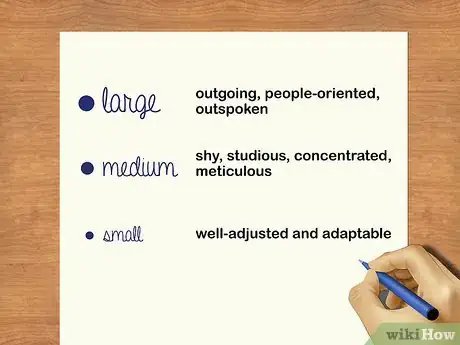
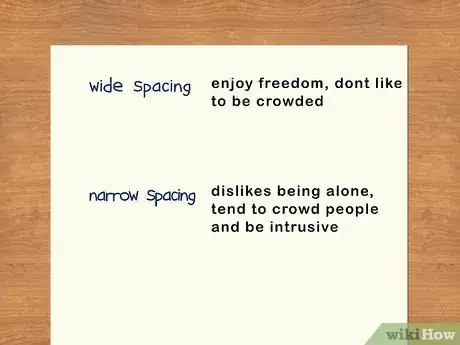
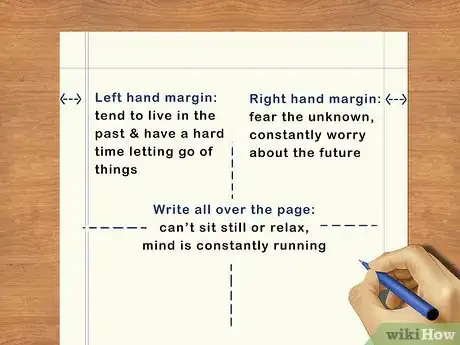



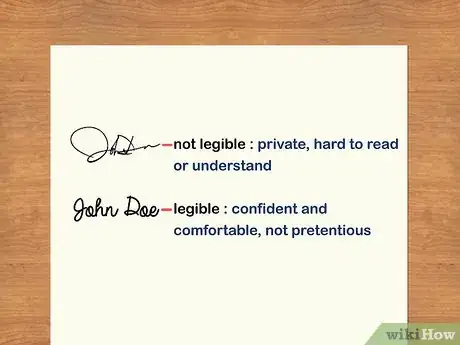


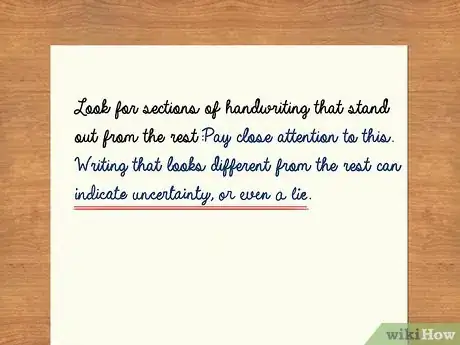
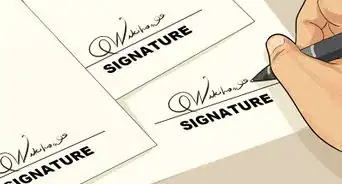
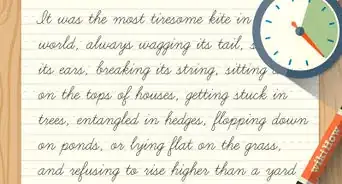
-Step-11-Version-3.webp)



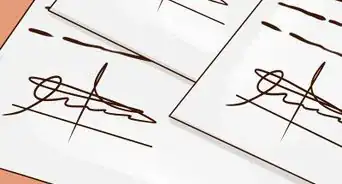
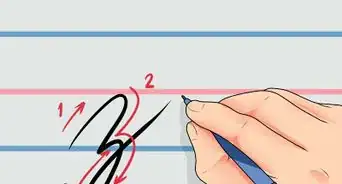


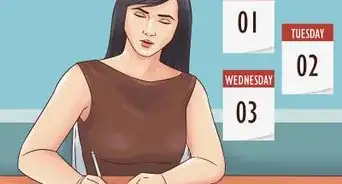
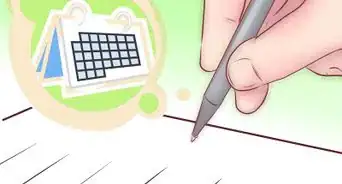











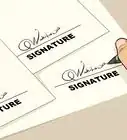
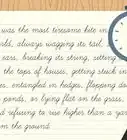

-Step-11-Version-3.webp)


































